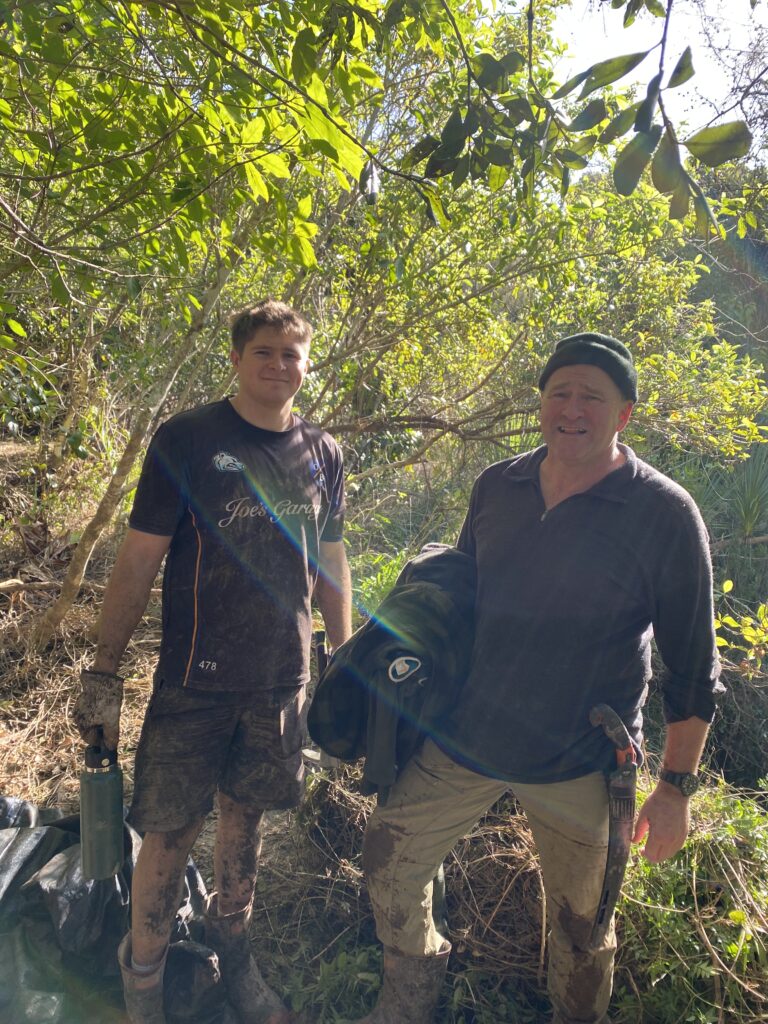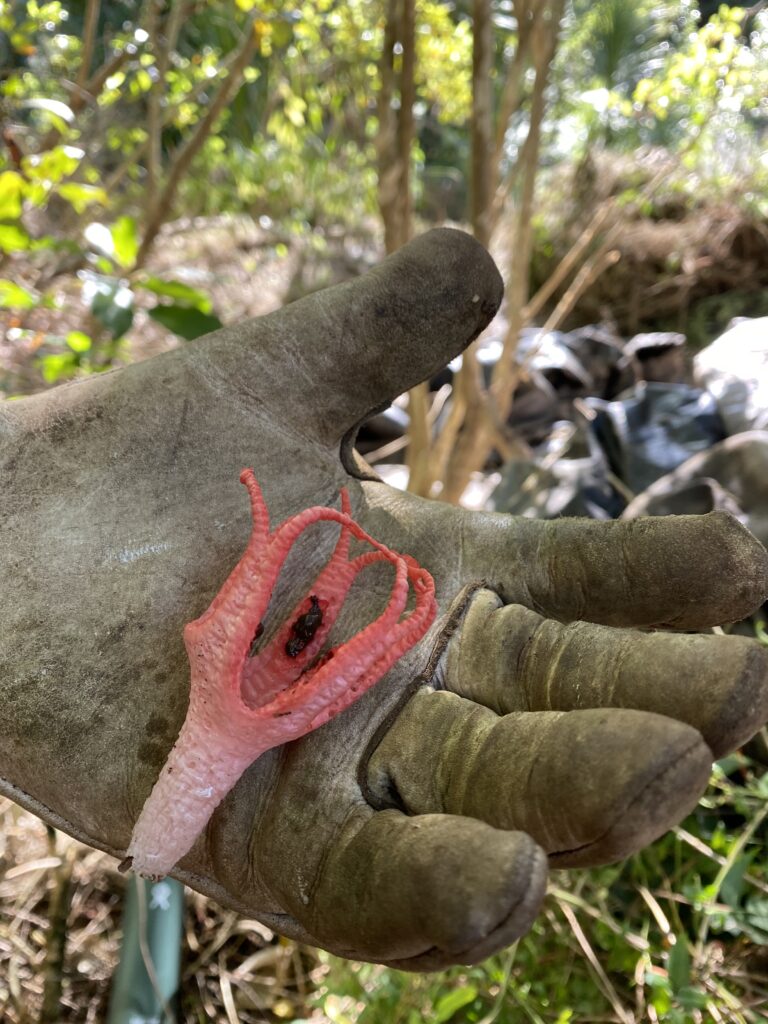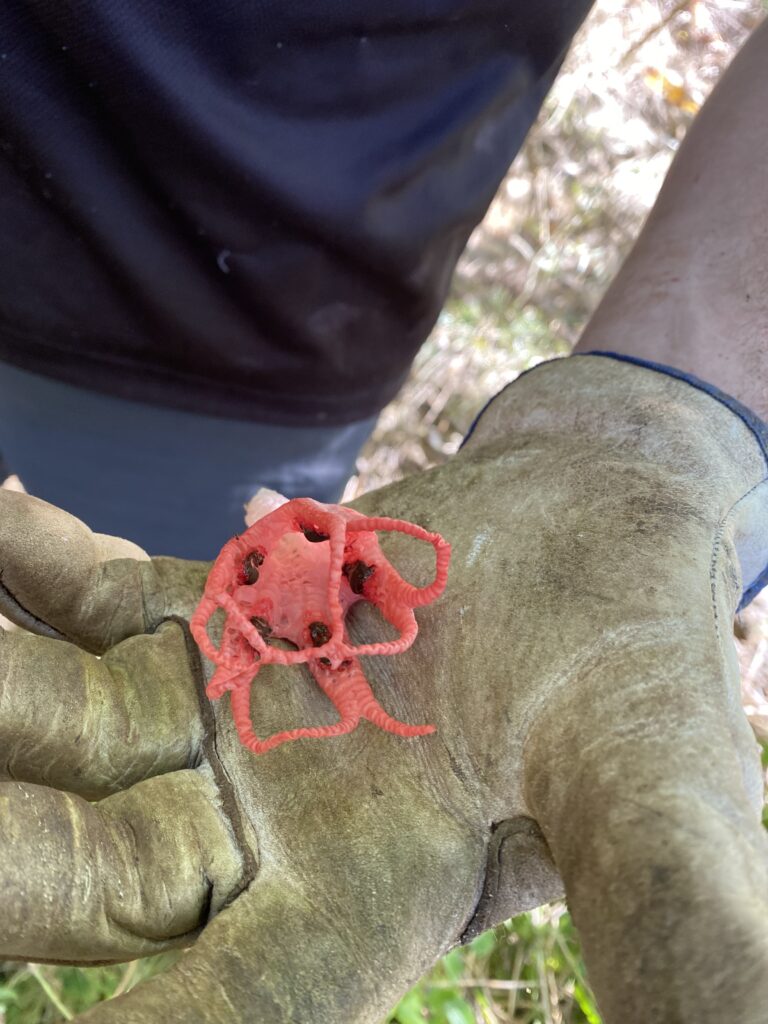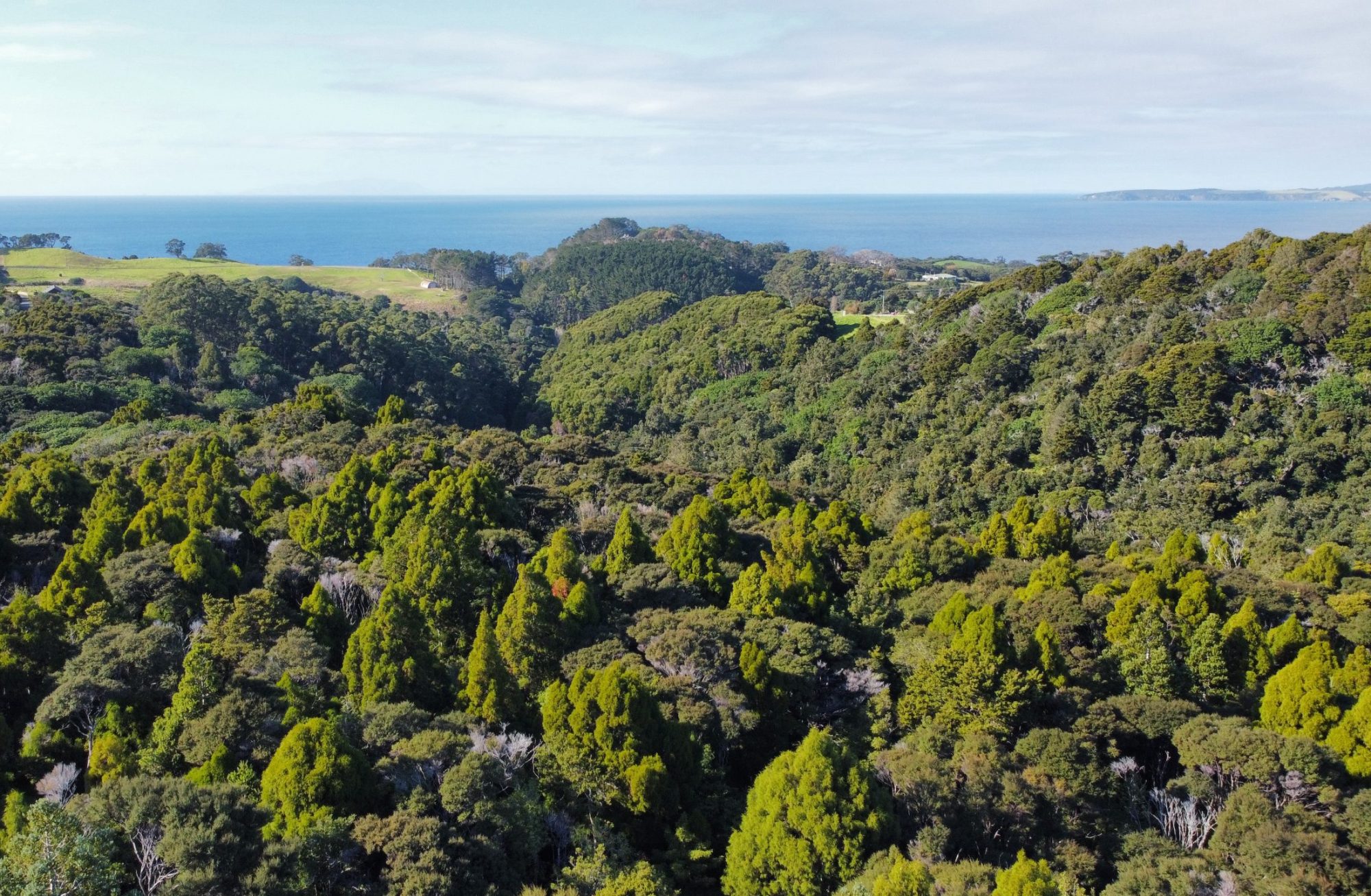Something about the bullock track at the bottom of Tenetahi Rd seems to strike fear into the hearts of even our most seasoned volunteers. Maybe it’s the seemingly impenetrable jasmine, the long stretches of ivy, the thick vines of Japanese honeysuckle, the mountains of ginger, or the tangled strands of blue morning glory. There’s also another possible deterrent… the pungent smell of the native stinkhorn fungus, Aseroe rubra (anemone stinkhorn). One thing’s for sure: when a working bee on the Bullock Track is mentioned, people suddenly remember they have other plans!
On Sunday 29 June, two unsuspecting volunteers; Damian Moody and his son Marcus, ventured into this notorious piece of bush. They tackled the jasmine with sheer determination and removed Japanese honeysuckle, and moth plant vines as thick as your wrist. They also emptied ten weed bags of mulch in preparation for the next working bee. Marcus returned the following day and discovered a foul-smelling anemone stinkhorn fungus; the odour of which is described as resembling rotting meat or animal feces.
In total, volunteers (including Marcus and Damian) clocked up 15 hours of hard work on 29 and 30 June. Whether they knew what they were getting into is unclear, but their contribution has made a real difference.
We’re incredibly grateful for the help of all our volunteers who have worked hard to restore this special area of bush.


Stinkhorn Fungus

Streamside work and Tradescantia Beetles
Keith and Chris have continued to chip away at tradescantia along the stream edges. It’s interesting how the tradescantia beetle, a form of biological control, has become established in some areas but not others.
Heather Johnston-Lee from Pest Free Leigh asked if we would help her locate some tradescantia beetles, so we joined forces on a beetle hunt. Unfortunately, we weren’t able to find any beetles but we did collect a bundle of chewed tradescantia leaves, including some that looked like they had eggs on them. While they didn’t look exactly like the eggs shown in a previous post, they will hopefully prove useful. We decided some investigation is needed into the habits and spread of this elusive little beetle, including the best time to harvest them.

